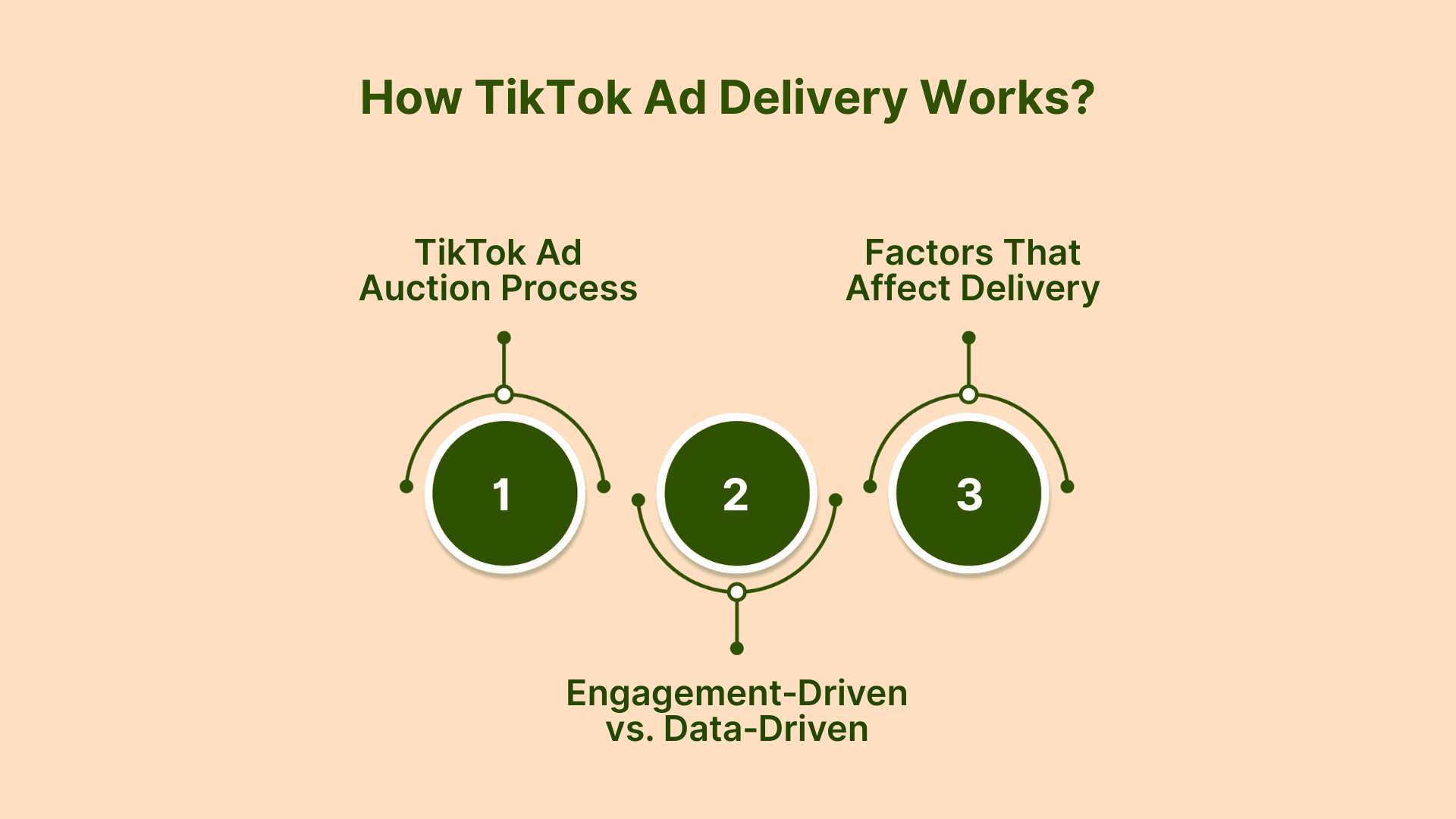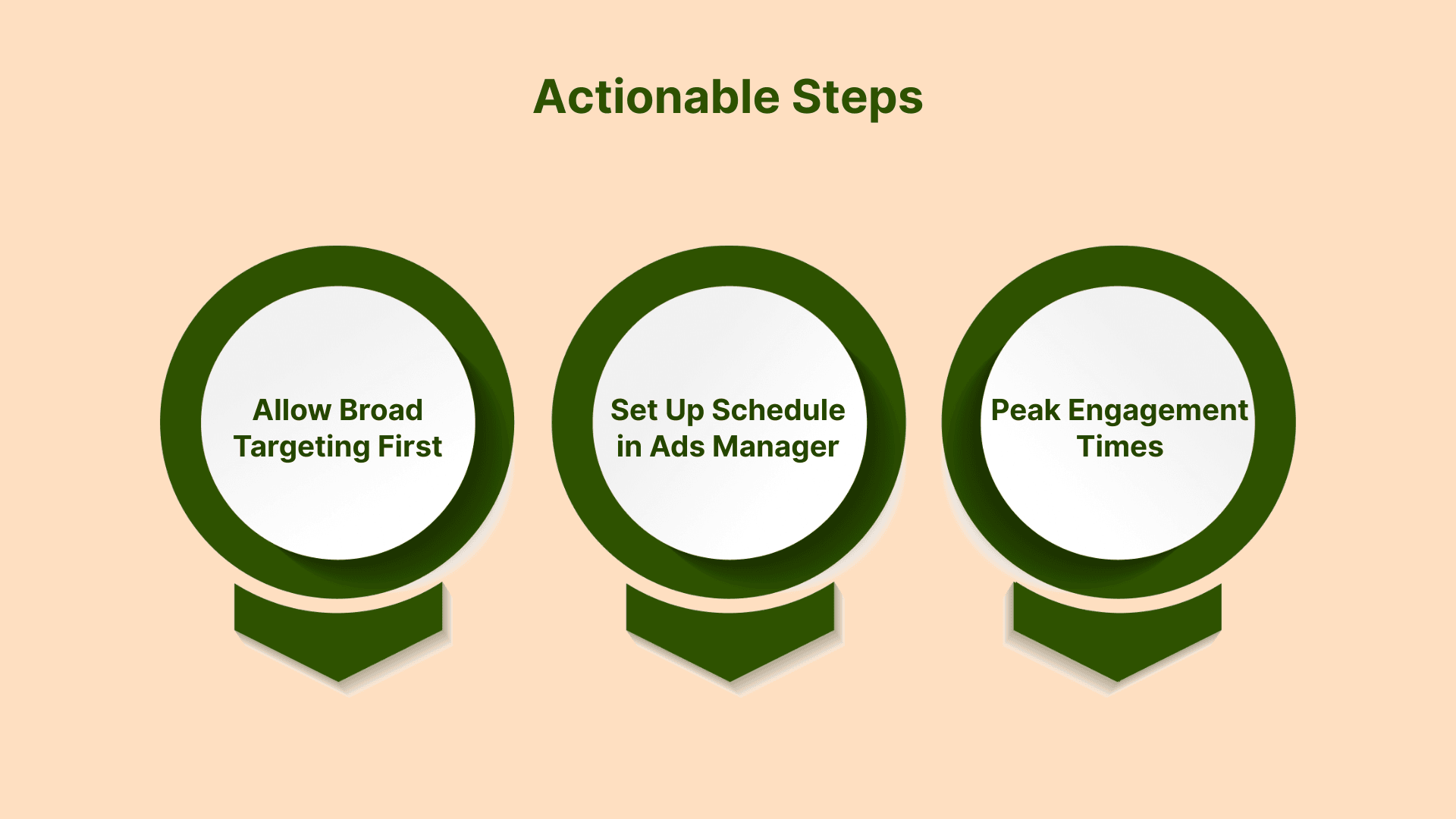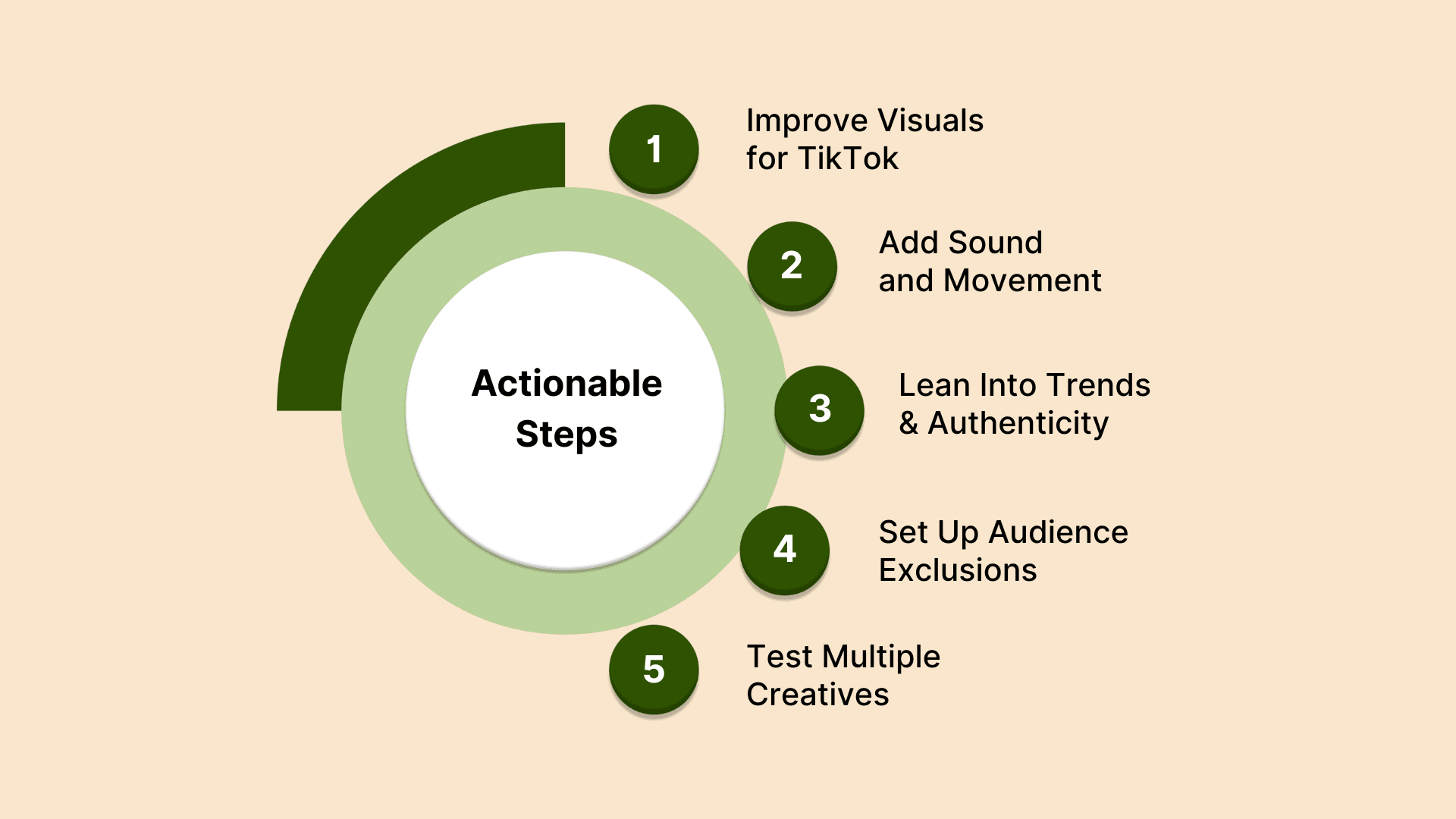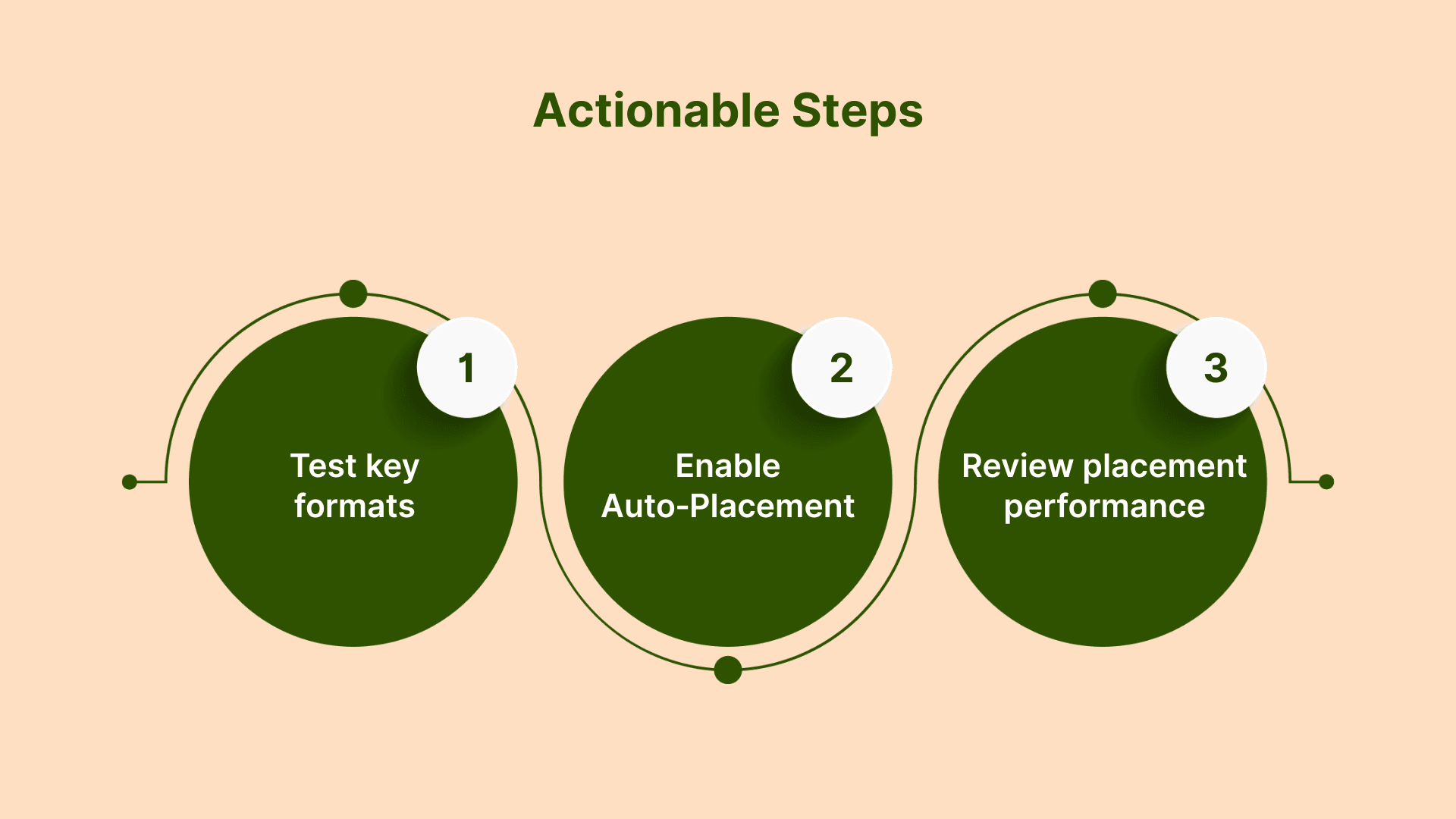Why TikTok Ads Are Not Spending: 8 Solutions
In recent years, TikTok has grown from a fun video app to one of the fastest-growing places for ads, thanks to its active users and smart recommendation system. Marketers are excited to take advantage of this growth, and the numbers prove it. According to a recent Wall Street Journal report on TikTok’s 2025 upfront season, ad spending on the platform is projected to climb 20.3% to $14.8 billion this year.
Yet even after you’ve set up campaigns in TikTok Ads Manager and allocated your budget, your spend sometimes stays stuck at zero. Every time you check, your ads aren’t delivering, your performance chart flatlines, and you’re stuck wondering why TikTok ads not spending.
That lack of delivery not only hurts your KPIs but also delays installs, blocks your learning phase, and wastes days of potential growth. Meanwhile, you’re under pressure to hit targets, justify spend, and prove your strategy works. Watching budget sit idle feels like money slipping through your fingers.
TikTok ads might not be working for eight main reasons, but each reason has a solution. In this blog, you'll learn how TikTok's auction and delivery system works. Then, you'll go through each of the eight issues with clear instructions to fix them.
How TikTok Ad Delivery Works

Before you troubleshoot why your TikTok ads are not spending, get to know how TikTok decides which ads to show. This background will help you spot where delivery might be slowing down.
1. TikTok Ad Auction Process
When someone opens TikTok, eligible ads enter a live bidding round. TikTok evaluates each ad on:
Bid amount: how much you’re willing to pay per result
Creative relevance: how well your video and copy match the user’s interests
Estimated action rate: the chance the user will watch, click, or install
The top‑scoring ads win and get shown immediately. Every impression, click, and install then feeds back into TikTok’s algorithm so future bids are more accurate.
2. Engagement‑Driven vs. Data‑Driven Delivery
TikTok leans heavily on real‑time engagement:
Watch time
Likes, shares, comments
Profile visits
Platforms like Facebook rely more on fixed audience segments built from user profiles. On TikTok, strong early engagement helps your campaign exit the learning phase faster and spend more smoothly.
3. Account Factors That Affect Delivery
Three account‑level elements can slow or halt spending:
Account history: Established accounts with consistent results win more auctions.
Spend velocity: Large or sudden budget increases reset learning and pause spending until the algorithm relearns.
Learning phase: Each ad set needs roughly 25 conversion events (or about seven days) to stabilize delivery.
To avoid delivery gaps, ramp budgets gradually, limit major bid edits, and let each ad set collect enough data before making changes.
With a clear understanding of TikTok’s auction, engagement signals, and account requirements, you’re prepared to identify and resolve why TikTok ads are not spending. Keep bids consistent, monitor engagement, and allow each campaign time to optimize.
With that foundation in place, let’s move on to the eight main reasons your ads might not be spending.
Also Read: Elevate Your Ad Strategy: Expert Tips for Analyzing Competitors with TikTok Ad Library
The 8 Core Reasons TikTok Ads Are Not Spending (with Solutions)

1. Insufficient Budget Allocation
Your ads won’t run if your budgets are too low. TikTok requires a minimum spend to ensure smooth delivery. If you set budgets below these thresholds, your campaigns and ad groups will not receive any impressions.
Solution:
Make sure your budgets exceed TikTok’s stated minimums:
Campaign level: At least $50 per day or per campaign (lifetime budget)
Ad group level: At least $20 per day (lifetime budgets are automatically calculated as $20 × number of days)
Actionable Steps:
Set clear budgets when you create a campaign. In Ads Manager, select a daily or lifetime budget of at least $50 for each campaign.
Verify each ad group’s budget. Ensure each ad group has a daily budget of at least $20. Ads Manager will show an error if it’s set too low.
Double‑check after publishing. Go to the “Budget” tab in TikTok Ads Manager and confirm that both campaign and ad group budgets meet the minimums.
Once you confirm your budgets are high enough, your ads should start delivering. From here, you can move on to the next issue that might be holding back your spending.
2. Ad Scheduling Time Constraints
Limiting your ads to specific days or hours can result in minimal spend, even if your budget is adequate. This occurs because TikTok is unable to deliver ads when your audience is inactive. Restrictive scheduling prevents your ads from running during peak engagement times, resulting in TikTok underutilizing your budget.
Solution:
Use data to choose the best days and hours for your target players. Let TikTok’s algorithm optimize delivery within those slots.
Actionable Steps:

Allow Broad Targeting First: Begin with broad settings so TikTok’s system can identify the most relevant users. Once you identify where engagement peaks, you can refine your schedule accordingly.
Set Up Your Schedule in Ads Manager
Log in to TikTok Ads Manager and go to Campaigns > Ad Groups.
In the Ad Groups table, scroll right to the Ad Scheduling column.
Click Edit and select the days and time slots you want your ads to run. This confirms that your ad group will only run when you have chosen.
Find Your Peak Engagement Times
In TikTok Ads Manager, go to Analytics > Overview, then open the Followers tab.
Scroll to Follower Activity to view the hours when your followers are most active.
Convert those times to your target time zone and align your ad schedule accordingly.
By matching your run times to when users are most active, you’ll help ensure your ad budget is spent effectively.
3. Fix Ineffective Targeting and Audience Overlap
If you target the wrong audience or the same people multiple times, your ad groups end up competing with each other. That internal bidding increases costs and prevents your budgets from fully spending.
What to do:
Create a Lookalike Audience in TikTok Ads Manager by going to Tools → Audience Manager → Create Audience → Lookalike Audience. Select one of your high‑value custom audiences (for example, users who have made purchases) as the source so TikTok can find similar users.
Exclude any audiences you’ve already used elsewhere by opening each ad group’s targeting settings and adding those custom or lookalike audiences under Exclusions. This prevents your own ad groups from bidding against each other.
Enable Targeting Expansion (formerly Automatic Targeting) in each ad group’s advanced settings to let TikTok automatically broaden your audience slightly beyond your specified targets, increasing reach and improving delivery efficiency by finding additional relevant users.
Check your Audience Overlap report in Audience Manager on a weekly basis. If two ad groups share more than 30% of their potential reach, merge or further exclude one group and monitor how delivery and cost metrics respond over the next 48 to 72 hours.
Actionable Steps:
Step 1: Log in and navigate to Tools → Audience Manager → Create Audience → Lookalike Audience. Select a high‑value custom audience (e.g., top 20% of spenders).
Step 2: Name your lookalike group clearly (e.g., “LA – Top Spenders”).
Step 3: In each ad group’s settings, under Exclusions, add your new lookalike so it doesn’t get targeted twice.
Step 4: Turn on Targeting Expansion in your ad group settings.
Step 5: Regularly run the Audience Overlap report, adjust any overlapping groups as needed, and then monitor performance for 48–72 hours.
By setting up distinct lookalike audiences, excluding duplicates, and leveraging TikTok’s smart targeting features, you can avoid internal competition and give your campaigns the room they need to perform optimally.
4. Low Quality Ad Creative and Engagement
If your visuals look overproduced or don’t match TikTok’s style, users scroll past, and your ad never gets spent. Poor hooks, pixelated footage, or missing sound/music all send a signal that your ad won’t capture attention.
Solution:
Optimize every element of your creative to match TikTok’s best practices and keep uninterested audiences from seeing your ads.
Actionable Steps:

Improve Visuals for TikTok
Shoot in vertical (9:16) format at a minimum resolution of 720p and keep important content within the safe zone to prevent cropping.
Use clear, well-lit shots and a DIY feel; TikTok favors ads that resemble native posts.
Add Sound and Movement
Include popular music or native sound. TikTok users expect audio; silent ads underperform.
Use quick cuts or simple transitions within the first 3–6 seconds to capture viewers' attention and increase watch time.
Lean Into Trends and Authenticity
Refer to trending challenges, hashtags, or memes that align with your app.
Feature real people (creators, employees, or satisfied users) to make ads feel genuine.
Set Up Audience Exclusions
In Ads Manager under Audience, use Custom Audiences to exclude recent converters or uninterested segments. This prevents wasted delivery and focuses the budget on new prospects.
Exclude overly narrow location or interest groups that shrink your reach too much, but broad yet relevant targeting aids the learning phase.
Test Multiple Creatives
Run 3–5 distinctly different videos in each ad group. TikTok’s Smart Creative tool can automatically mix and match assets to find top performers.
Refresh underperforming creatives at the first sign of fatigue rather than pausing the whole ad group.
By optimizing your videos to fit TikTok’s format, utilizing sound and trends to capture viewers, and excluding audiences unlikely to engage, you’ll enhance engagement signals and get your ad spending back on track.
5. Auction Competition and Bid Strategy
When your campaigns aren’t spending, it usually means your bids are too low to win TikTok’s ad auction. You're competing with other advertisers targeting the same audience, and TikTok prioritizes ads that balance bid price with relevance. If your bid cap is too low or your bid strategy isn’t optimal, your ads may not win enough auctions to utilize your budget fully.
Solution:
By selecting the optimal bid strategy and adjusting bid caps, you provide TikTok’s system with the flexibility it needs to allocate resources efficiently within your budget.
Actionable Steps:
Set a Bid Cap
Go to the “Bidding & Optimization” area of your ad group.
Enter a bid cap that matches the maximum cost per action you can afford.
Keep this cap at or slightly above your historical cost per acquisition to stay competitive.
Use Maximum Delivery
In the same section, choose the Maximum Delivery strategy.
This tells TikTok to spend your entire budget and maximize conversions, even if individual costs vary.
Test Off‑Peak Bidding
Identify times when fewer advertisers are active (early mornings or late evenings).
Schedule your ad group to run more heavily during those hours.
Monitoring CPMs and lower competition often leads to reduced costs.
These steps help you strike the right balance between cost control and budget utilization. By adjusting your bid cap to match what you can afford and letting TikTok’s system optimize delivery, you’ll see your ads begin to spend steadily again.
6. Optimize Learning Phase for Better Ad Spend
When your TikTok ads aren't spending, it usually means the system is still learning who to target. During the learning phase, the algorithm collects data to identify users most likely to convert. CPA may fluctuate, and budgets may remain unspent until enough data is gathered. Making significant changes during this phase can reset the learning process, causing delivery to stall and spending to slow.
Solution:
Provide the algorithm with a stable environment, feed it the correct funnel events, and introduce tweaks gradually so that you don’t interrupt its training.
Actionable Steps:

Avoid Frequent Edits: Once your campaign is live, refrain from making major edits, such as changing budgets, bids, or targeting, until you have achieved at least 20–50 conversions. This helps the system complete its initial learning without needing to restart.
Use Full‑Funnel Event Optimization: Set up your Pixel (a code snippet installed on your website to track user actions) or SDK (Software Development Kit) (a software library integrated into your app) to send at least three events (upper, mid, and lower funnel). Optimizing for multiple events provides TikTok with more data to learn from, enabling it to spend your budget more efficiently and effectively.
Stage Your Changes: If you need to adjust, make one small tweak at a time (for example, a slight bid increase) and wait two days to see results. This avoids unnecessary resets of the learning phase and maintains steady delivery.
By keeping your campaigns steady, feeding the algorithm clear signals, and pacing your adjustments, you help TikTok learn quickly. That means smoother spending and more consistent performance as your ads reach the right users.
7. Ad Approval Delays and Policy Issues
Getting your ad live fast means keeping your budget moving. However, even a well-built campaign can stall if it reaches TikTok’s review queue or triggers a policy rule. Ads typically clear review within 24 hours, but complex creatives or high volumes can push that to 48 hours or more. If your ad is in “Pending” status, it won’t spend until approval is cleared.
Solution:
Before you hit “Submit,” run your creative through a simple checklist to catch policy issues early. Then send two or three versions of your ad, with small tweaks to text or visuals, to see which sails through fastest.
What to Do:
Review TikTok’s Advertising Policies: Visit the official policy overview and confirm that your headline, imagery, and landing page comply with the rules.
Build a Quick Checklist: Include checks for prohibited content (e.g., misrepresentations, restricted products), correct aspect ratio, and clear calls to action.
Create Multiple Variants: Change one element at a time, such as swapping a headline, adjusting a thumbnail, or tweaking an animation, to increase the chances that at least one version will pass review quickly.
By running your ads through these steps, you’ll cut down on hold‑ups and keep your campaign spending. Keep testing variants and refining your checklist as TikTok updates its policies, and you’ll maintain steady delivery without surprise pauses.
8. Ad Format and Placement Issues
Low spend may occur if your ad format or placement doesn’t align with TikTok’s top-performing options. With various in-feed formats and placements available, some may underperform if they don’t match your campaign goals or creative. TikTok’s auction prioritizes formats and placements that drive engagement and keep users watching. Choosing one that fails to capture attention can result in your bid losing out in the auction.
Solution:
Focus on TikTok’s main In‑Feed ad formats and let the algorithm find the best spots for you.
Actionable Steps:

1. Test key formats
Try both In‑Feed Ads (Non‑Spark) and Spark Ads to see which one drives more impressions and spend.
Non-Spark Ads allow you to upload videos in vertical (9:16), horizontal (16:9), or square (1:1) formats. Vertical images are recommended at 540×960 px or larger.
Spark Ads are native ads that amplify your existing organic TikTok videos, seamlessly blending with user content to drive higher engagement. By utilizing your organic videos and captions, Spark Ads maintain a natural feel and can enhance ad delivery.
2. Enable Auto‑Placement
Enable automatic placement (also known as Smart+ Campaigns) to allow TikTok to distribute your budget across all eligible placements, including TikTok’s main feed and partner apps like Pangle. This widens your reach and helps your ads spend more evenly.
3. Review placement performance
Monitor Placement Metrics: After a few days, assess which placements yield the highest impressions and the lowest cost per result
Optimize Underperforming Placements: If a placement consistently underperforms, consider disabling it and reallocating the budget to higher-performing placements.
Conduct a split test by creating two ad groups within the same campaign: one with auto-placement enabled and another with manual selection of the TikTok In-Feed placement. Run the test for at least 7 days to ensure reliable results. After the test period, compare key metrics such as cost per install (CPI) and impressions to determine which configuration delivers better performance.
By testing both Spark and Non‑Spark formats and letting TikTok handle placement, you’ll find the mix that keeps your ad in the auction and driving results.
Now that you know all eight solutions, let’s put them into a clear two‑week test plan.
Also Read: TikTok Creative Center: A Practical Guide for Advertisers
Structuring Experimentation for TikTok Ads
When you’re trying to figure out why TikTok ads not spending, a clear test plan helps you pinpoint issues fast. Start by setting up a simple priority framework, then run a focused two‑week experiment. By following this structure, you’ll know exactly where to look and what to fix.
Priority Framework
Budget & Bidding
Use Daily Budget at the ad‑group level (not Lifetime Budget) and set it to at least 50× your target CPA.
Choose Maximum Delivery if your primary goal is to spend your entire budget; switch to Cost Cap when you need tighter control over the cost per action.
Objective Settings
Begin with upper‑funnel events (like “View Content” or “Add to Cart”) before moving to lower‑funnel goals (like “Purchase”) to help TikTok’s algorithm learn faster.
Targeting
Start broad: use demographic, interest, and behavior targeting with Smart Targeting enabled.
Avoid overly narrow audiences and expand with Lookalikes once you have solid data.
Creative
Test 3–5 distinct video assets per ad group to find winning styles.
Keep videos vertical (≥720p), 5–15 seconds long, with clear visuals and sound.
After core elements are stable, try tactics like dayparting, A/B testing captions, or layering Custom Audiences.
Two‑Week Test Plan
1. Week 1: Core Fixes (Solutions 1–4)
Day 1–2: Adjust budgets and switch bidding strategies.
Day 3–4: Update campaign objectives to focus on upper‑funnel events.
Day 5–7: Expand targeting and launch initial creative variations.
2. Week 2: Advanced Tweaks (Solutions 5–8)
Day 8–10: Introduce lookalike audiences and refine interest targeting.
Day 11–13: Swap in fresh creative and tweak ad copy.
Day 14: Review results and consolidate top performers.
Daily Monitoring & Pivoting
Check your spend curves and KPI shifts on the Dashboard each morning:
Spend Curve: Ensure your daily spend aligns with your budget cap.
Key Metrics: Watch Cost per Result, Conversion Rate, and Impressions.
Alerts & Insights: Look for warnings about “Out of Budget” or Ad Fatigue.
If spend stalls or costs spike, pause low‑performing ad groups and reallocate budget to those meeting your targets. A quick daily check lets you catch problems before they derail your test.
By following this structured two‑week plan, starting with budget and bidding, moving through objectives, targeting, creative, and finally advanced tactics, you’ll rapidly uncover what’s stopping your TikTok ads not spending and apply the right fixes.
Also Read: How to Create and Optimize TikTok Playable Ads?
Conclusion
The key lessons here are to set campaign and ad‑group budgets above TikTok’s minimum thresholds, give the algorithm time and stable data to learn, expand and exclude audiences thoughtfully to avoid overlap, and craft vertical, engaging creatives that align with TikTok’s native style. Pair those fundamentals with competitive bids, a solid approval checklist, and the right mix of ad formats and placements, then follow a structured two‑week test plan and daily monitoring routine to catch and fix any spend stalls before they derail your goals.
To streamline all of this at scale, Segwise’s AI Creative Agents integrate seamlessly with your TikTok ad account (and all your other ad networks) with no engineering effort required. They automatically tag creative assets, surface root‑cause metrics, flag under‑spending ad groups, and forecast ROAS so you can spot issues the moment they appear.
With custom dashboards and real‑time alerts driving faster decisions, you’ll spend smarter and hit your growth targets sooner. Start a 14‑day free trial to see how Segwise can optimize your ad spend from day one.
FAQs
Why is my payment method causing payment failures and stopping my ads from spending? Payment failures often occur due to incorrect card details, expired cards, or bank authorization issues. Double-check your payment information, ensure your card is valid, and confirm you have sufficient funds or credit to cover your ads.
How do account‑level spending caps work in TikTok Ads Manager? You can set a monthly, daily, or one‑time spending cap via Budget Manager in Business Center. Once your account reaches that cap, all ads pause until you raise or reset it.
Could a misconfigured TikTok Pixel prevent my ads from spending? Yes. If your Pixel code isn’t correctly installed or isn’t firing events (such as page views or purchases), TikTok’s system lacks the necessary data to optimize delivery. Use the TikTok Pixel Helper to verify setup and event tracking.
Why do my ads show as “Active” but still report zero spend? Sometimes metrics don’t refresh properly. Verify that your date selector is set correctly and try different date ranges or perform a hard refresh to view real-time numbers.
Why should I wait 12–24 hours before worrying about no ad spend? New campaigns, especially on fresh accounts, can take up to a day to start spending as TikTok’s algorithm calibrates delivery by learning which users are most likely to engage and optimizing ad placements accordingly. Allow at least 12–24 hours before making major changes.

Comments
Your comment has been submitted successfully!